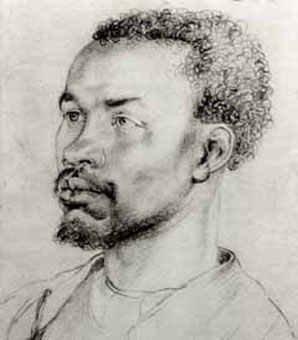
The awful and inhumane institution of slavery—so often exclusively blamed on European peoples—was in fact legally established by a black African in Virginia in 1655, official records have shown.
The institution of slavery—as morally reprehensible as it is—is one of the psychological weapons which the Jewish extremist controlled mass media continually use to incite racial hatred and instil guilt in European Americans.
Yet the reality is that the first legal recognition of slavery was created in the colony of Virginia by a court case launched by an African, Anthony Johnson.
Up to that time, there were no perpetual slaves in America, only “indentured labor.” The institution of indentured labor—where someone worked for a certain period of time, usually to pay back a debt or the cost of passage to the New World. Once that time period was up, the laborer was “free” to go.
This is the reason why a large number of the first “slaves” or indentured laborers in early America were white, another fact often suppressed in modern “history” books.
The indentured laborer system was also applied to Africans purchased from Atlantic slave traders. All masters were required to free their servants after their time was up and seven years was the limit that an indentured servant could be held.
Upon their release they were granted 50 acres of land of their own to start a farm—and this included any African.
This system was ended in 1655 when one of the free Africans, named “Anthony Johnson” (a European name he adopted) brought a court case against one of his own indentured servants, a fellow African.
Johnson was brought to the US to work on a tobacco farm in 1619, and upon his release, he set up his own farm on his allocated 50 acres. By 1651, he held 250 acres and five black indentured servants.
Three years later, in 1654, one of these black indentured servants, named John Casor, was about to end his period of service when Johnson told him that he was unilaterally extending his period of service.
Casor simply left Johnson’s farm, and took a paid job with a white farm owner, one Robert Parker.
Johnson brought suit in Northampton County court against Robert Parker in 1654 for detaining his “Negro servant, John Casor,” saying “Hee never did see any [indenture] but that hee had ye Negro for his life”. In the case of Johnson vs Parker, the court of Northampton County upheld Johnson’s right to hold Casor as a slave, saying in its ruling of 8 March 1655:
“This daye Anthony Johnson negro made his complaint to the court against mr. Robert Parker and declared that hee deteyneth his servant John Casor negro under the pretence that said negro was a free man. The court seriously consideringe and maturely weighing the premisses, doe fynde that the saide Mr. Robert Parker most unjustly keepeth the said Negro from Anthony Johnson his master … It is therefore the Judgement of the Court and ordered That the said John Casor Negro forthwith returne unto the service of the said master Anthony Johnson, And that Mr. Robert Parker make payment of all charges in the suit.”
Thus the first legal in perpetuity slave-ownership in America was established—by a black man.
Casor became the first legal permanent slave and Johnson the first legal slave owner, as opposed to the holder of indentured labor.
This court case set the precedent for the 1670 law, passed by the Virginia colonial assembly, which permitted free whites, blacks, and Indians the right to own blacks as slaves.
By 1830 there were 3,775 black families living in the South who owned black slaves. By 1860 there were about 3,000 slaves owned by black households in the city of New Orleans alone.
Sources:
Sweet, F.W., Legal History of the Color Line: The Rise and Triumph of the One-Drop Rule. Backintyme. p. 117, (2005)
Billings, W., The Old Dominion in the Seventeenth Century: A Documentary History of Virginia, 1606–1700. Pg 286–287. (2009)



